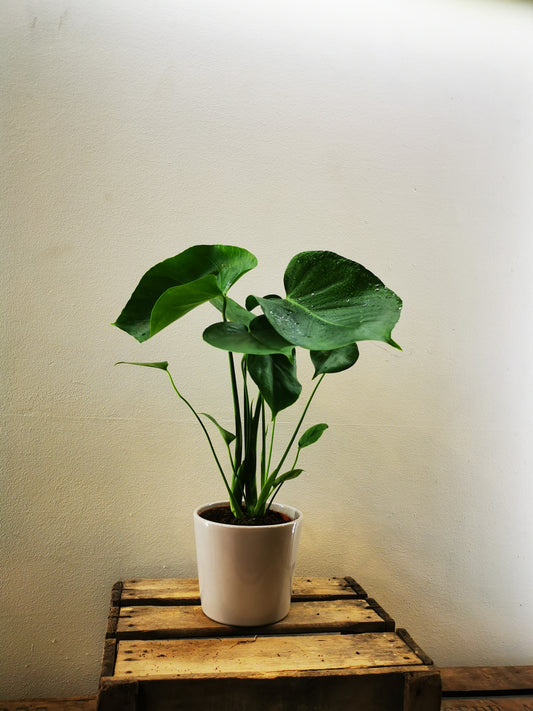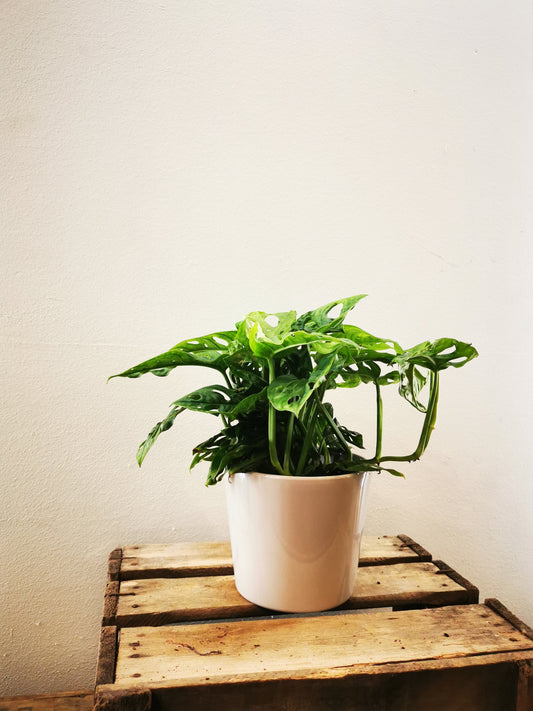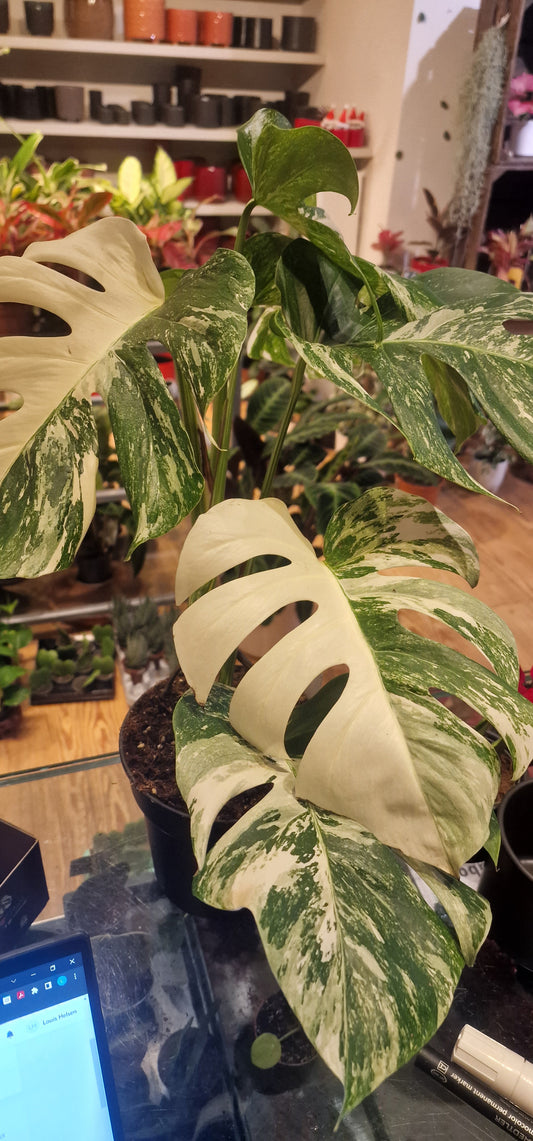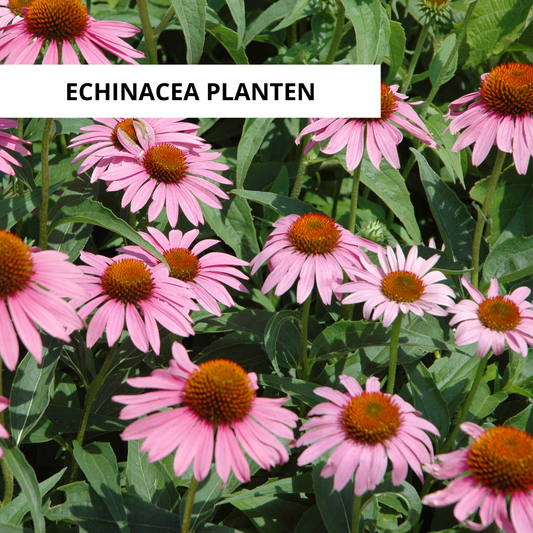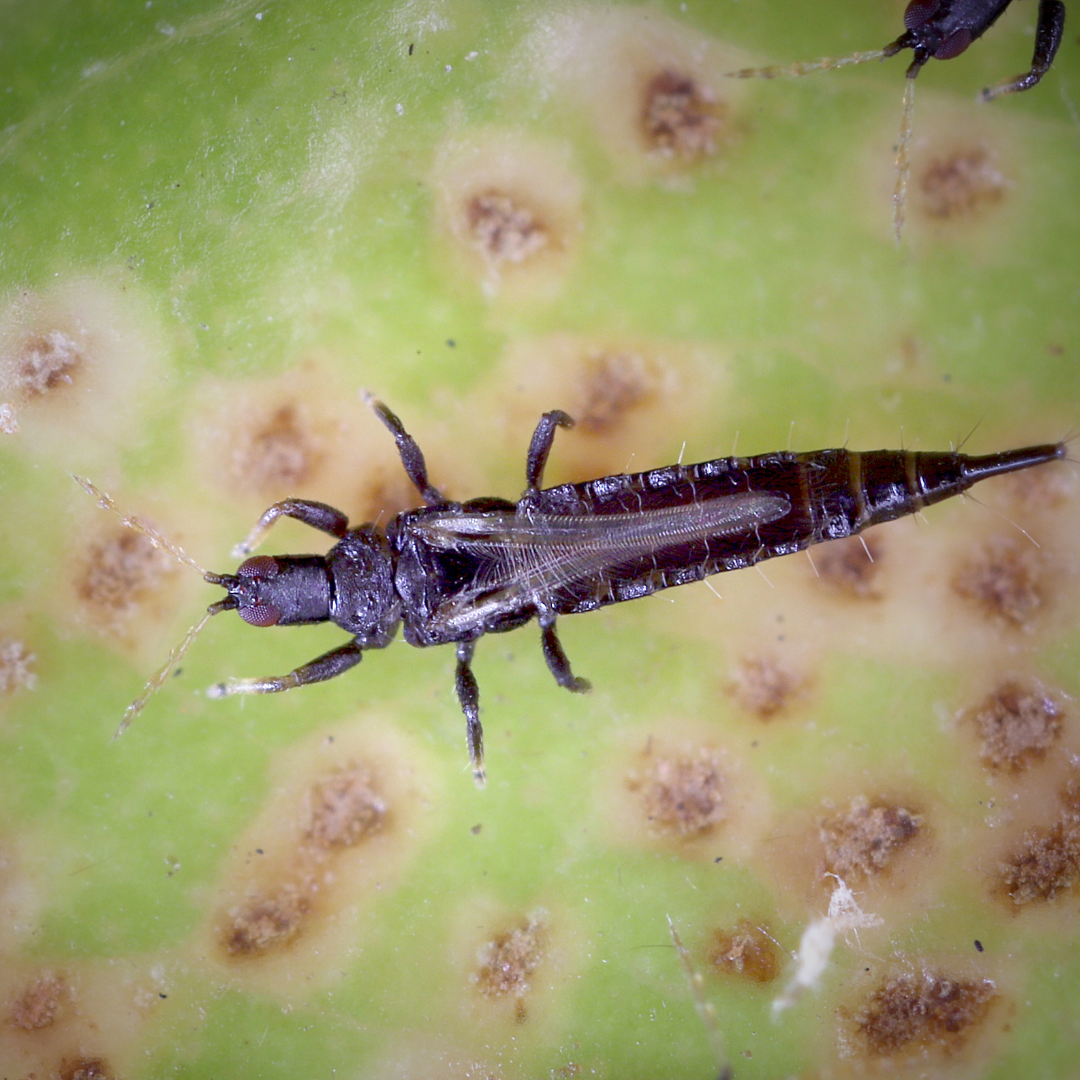
There are thrips on my Monstera!
Share
Thrips are small, slender insects that can be a big problem for plants, including Monsteras. These insects feed on the sap of plants and can cause damage to the leaves, flowers, and fruits of the plant. If you notice that your Monstera plant has thrips, it is important to take action as soon as possible to remove them.
Here are some steps you can follow to remove thrips from your Monstera plant:
- Identify the problem: The first step to getting rid of thrips is to confirm that your Monstera plant actually has thrips. Look for small, dark insects on the leaves and stems of the plant. You may also see small, irregularly shaped scars on the leaves or flower buds that have been damaged by thrips. These so-called scars are often very light dots in the dark green leaf.
- Remove Infected Plants or Plant Parts: If you have a small infestation of thrips, you can remove infected plants or plant parts to help stop the spread of the pests. This is especially important if you have other plants in the same area as the infected Monstera.
- Use natural predators: There are several natural predators of thrips that you can use to help control the population. These are often predatory mites. You can purchase these predators online or at your local garden center. We prefer Biogroei !
- Use a natural insecticide: If the infestation is severe or natural predators are not effective, you may need to use a natural insecticide to get rid of the thrips. Neem oil is a safe option that is effective in controlling thrips.
- Keep your plant healthy: In addition to removing thrips, it is important to keep your Monstera plant healthy to prevent future infestations. Provide the plant with proper care, including adequate light, water, humidity, and nutrients.
By following these steps, you can eliminate thrips from your Monstera plant and prevent future infestations. If you can’t get the pest under control or the damage to the plant is severe, you may need to remove the plant to prevent the pests from spreading to other plants.
Want to know more about thrips? Read about it on the Biogroei website!

